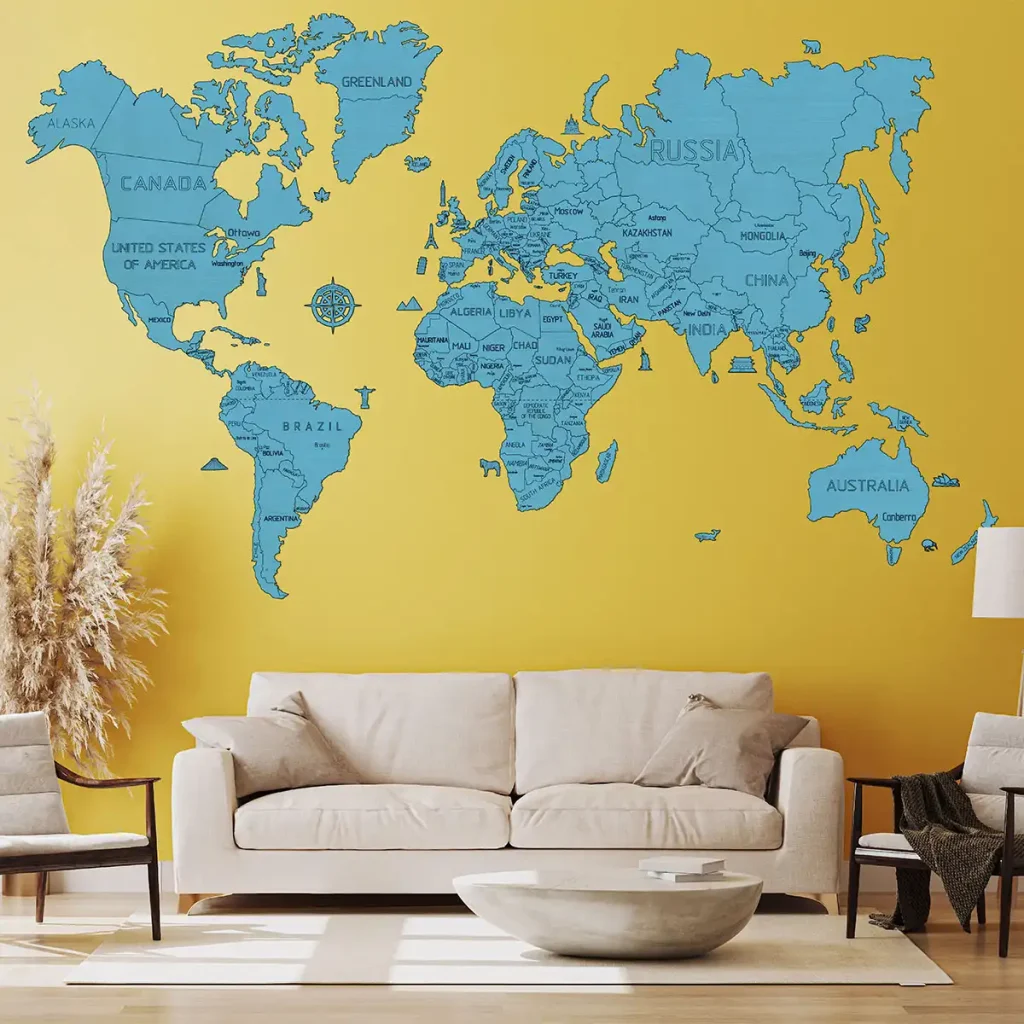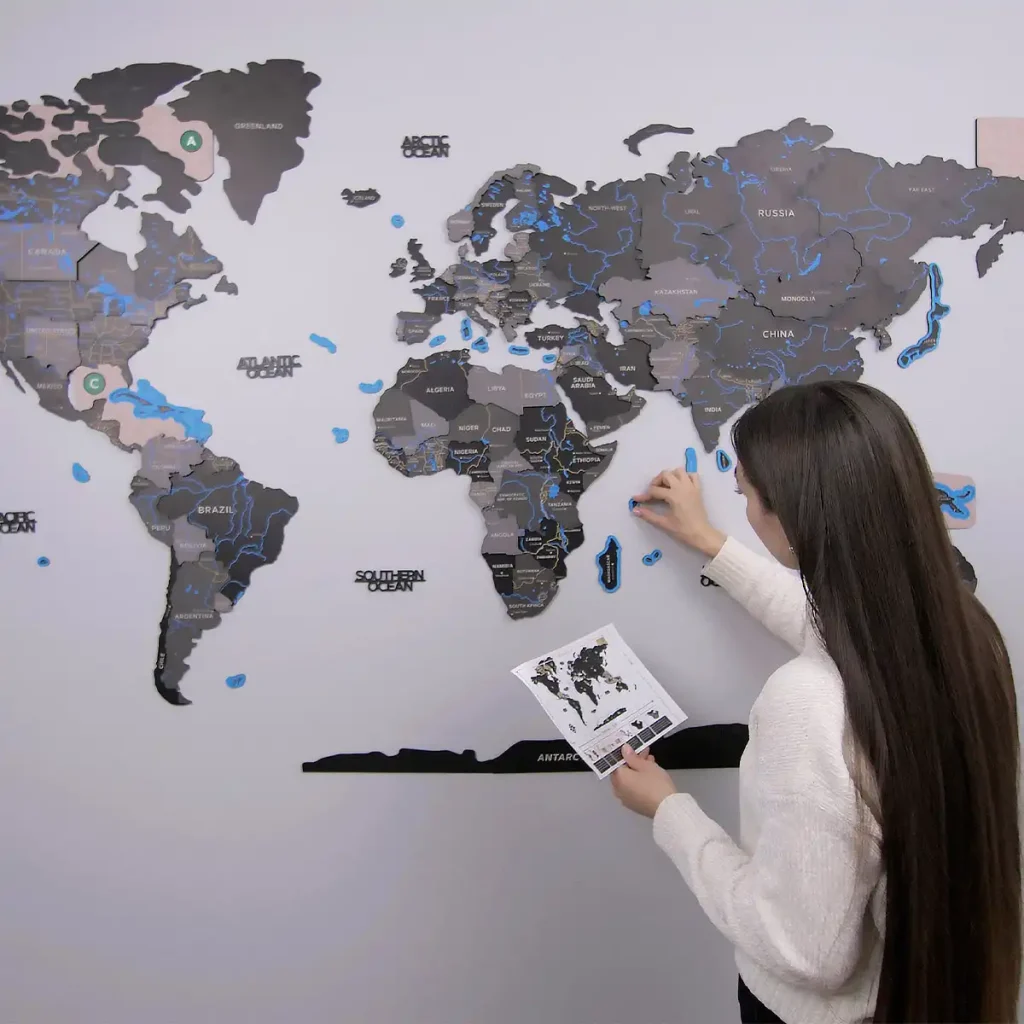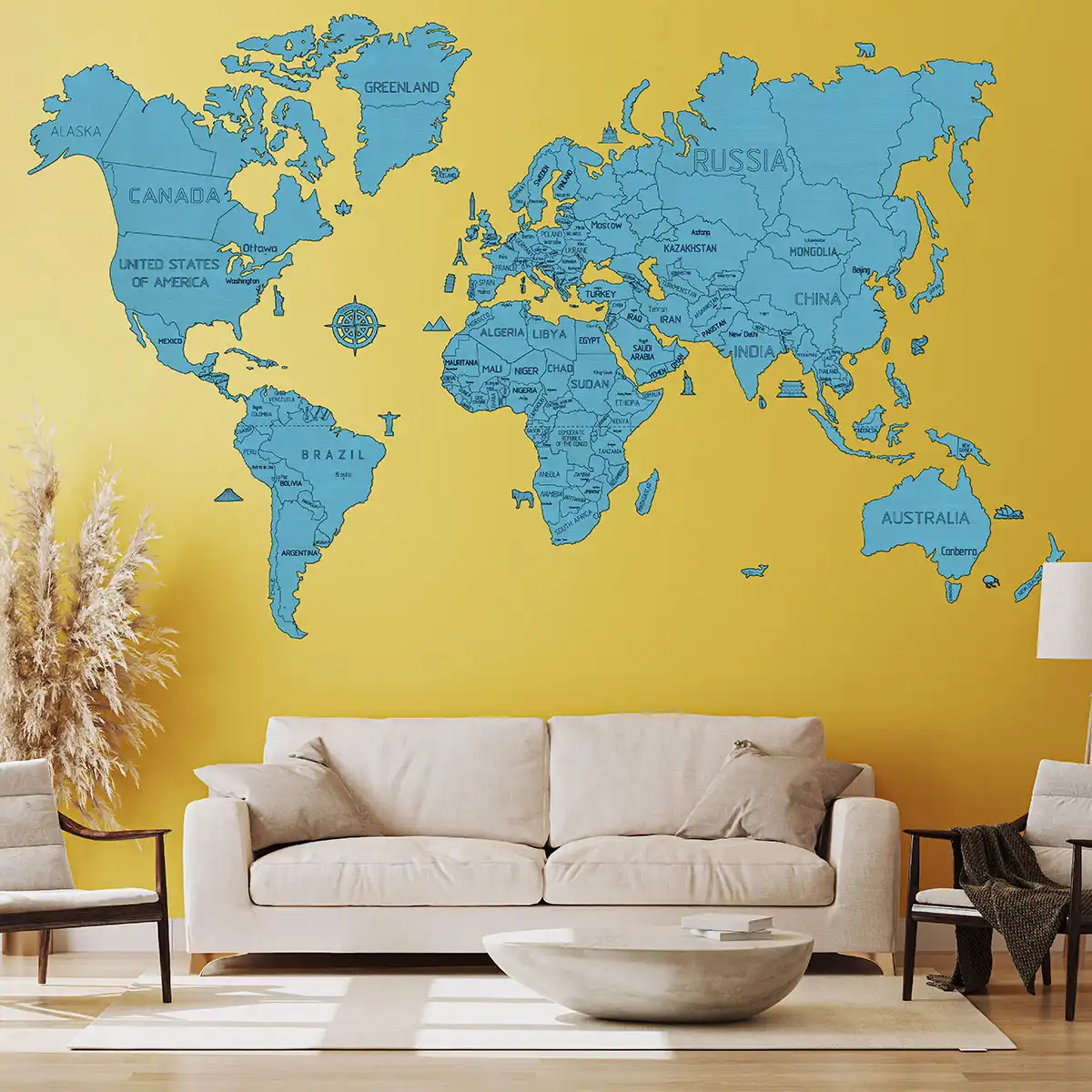Puzzles are not only an engaging pastime but also a potential source of creative decor for your home. One interesting way to use puzzles is to create unique compositions for wall decoration. In this article, we will explore various methods of gluing puzzles, as well as ideas and materials for creating stylish decor.

Methods of Puzzle Gluing:
- Gluing on Cardboard or Paper: This method is the simplest and most accessible. To begin, lay the puzzle on a flat surface and cover it with glue. Then carefully flip the puzzle over and place it on a sheet of cardboard, paper, or board to allow the glue to fix each piece. After the glue has dried, you can trim any excess cardboard around the puzzle. We recommend to use a special glue for puzzles, ordinary glue can spoil them.
2. Using Adhesive Film: Adhesive film makes the puzzle gluing process easier and provides a more durable connection. Simply adhere the film to the back of the puzzle, then carefully trim any excess material.

Design Ideas:
- Single Large Puzzle: Glue together a single large puzzle and hang it on the wall as a standalone accent piece. It can be a striking image that draws attention and complements your interior style.
- Multi-Puzzle Collage: Assemble several puzzles of different sizes and arrange them on the wall as a collage. You can create abstract compositions or images that hold special meaning for you.
- Puzzle Wall: Cover an entire wall with puzzles of various shapes and sizes, creating a unique backdrop for your interior. This can be an interesting solution for the living room, bedroom, or study.
Materials for Gluing and Decoration:
- Frames: Mount the glued puzzles in frames for a more polished look and protection against damage.
- Decorative Elements: Add decorative elements to the puzzles, such as beads, rhinestones, or stones, to give them a unique charm.
- Background: Use background material to make the puzzles look more expressive. This could be fabric, wallpaper, or acrylic paint.
Advantages and Disadvantages of Various Mounting Methods:
Double-Sided Tape:
Pros: Easy to use; no need to drill holes in the wall; ideal for lightweight puzzles.
Cons: May damage the wall surface upon removal; limited weight capacity.
Picture Hooks:
Pros: Secure mounting; possibility to adjust puzzle position.
Cons: Requires drilling into the wall; visible mounting elements.
Velcro Adhesive Tape:
Pros: Easy to install and adjust; can be removed and reattached.
Cons: Adhesive may lose grip over time; limited weight capacity.
Rail Hanging System:
Pros: Reliable; allows for adjusting and replacing puzzles without wall damage.
Cons: Installation complexity; initial material and installation costs.
Magnetic Mounting:
Pros: Easy removal and rearrangement; no wall damage required.
Cons: Requires a metal plate or magnetic paint on the wall; limited weight capacity.
Creating a Frame with a Hanging System:
Pros: Presentable appearance; puzzle protection; can use standard frame mounts.
Cons: Additional costs for frame construction; increased overall weight.
The choice of method depends on the weight and size of the puzzle, the type of wall for mounting, and the desired ease of handling the finished product.
With these methods and ideas, you can turn ordinary puzzles into stylish and original decor for your home. Don’t be afraid to experiment with shapes, colors, and textures to create a unique space that reflects your individuality and taste.
